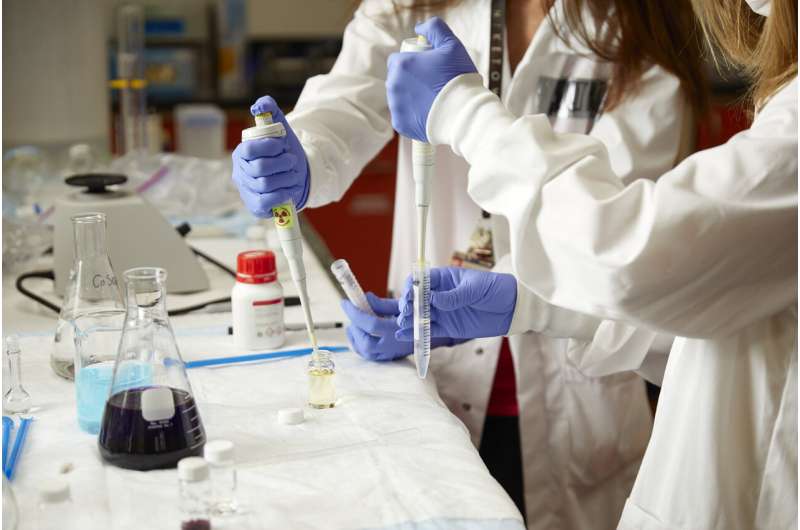This article has been reviewed according to Science X's editorial process and policies. Editors have highlighted the following attributes while ensuring the content's credibility:
fact-checked
peer-reviewed publication
trusted source
proofread
Scientists discover the possible triggers for bacterial pathogens, opening the door for new treatment strategies

The legendary Alexander Fleming, who famously discovered penicillin, once said "never to neglect an extraordinary appearance or happening." And the path of science often leads to just that. New UNLV research is turning the page in our understanding of harmful bacteria and how they turn on certain genes, causing disease in our bodies.
A team of interdisciplinary scientists, led by professor and microbiologist Helen Wing, focuses on Shigella—a lethal bacterial pathogen that causes abdominal cramping, fever, and diarrhea. The Centers for Disease Control and Prevention estimates that Shigella cases lead to 600,000 deaths globally each year.
Shigella contains a major 'switch' protein (VirB), which triggers the bacterium to cause disease in humans. VirB does this by binding to Shigella's DNA, activating the disease. The researchers showed that it is possible that interfering with VirB's binding process can prevent Shigella from making us sick.
The study, which was published Sept. 20 in the journal mBio, earned the journal's "Editor's Pick" accolade.
"When molecular substitutions are made in VirB, this protein loses the ability to turn on virulence genes in Shigella, therefore making Shigella non-infectious," said Taylor Gerson, a fourth-year Ph.D. student at UNLV and the study's first author.
Traditionally, proteins that control how harmful a disease is, such as VirB, have been underappreciated. The goal of the team's microbiology lab is to better understand these 'switch' proteins, which turn an otherwise harmless bacteria into an aggressive pathogen.
"I think our research has a broader impact," said Monika Karney, a UNLV lab technician and study co-author. "What we're seeing with this one protein in this one bacterium—there's room for it to be applied to other proteins in other clinically relevant bacteria."
The implications this research has for other pathogens remain to be seen, but the hope is that it is a major stepping stone toward putting a big red "X" through some of the diseases plaguing many parts of the world.
"We study these molecules to understand how they function in disease, so that other labs may look into finding drugs that kill these pathogens," said Wing. "Understanding these proteins and what they interact with is critical."
Integral to the research is CPT, or cytidine triphosphate, and its role in the binding process. The molecule is traditionally used as a building block for making DNA and RNA, and is needed by VirB for this process. Interfering with that binding process is what ultimately opens the door for future treatment strategies and potentially minimizes the impacts of harmful bacteria, such as Shigella.
More information: Taylor M. Gerson et al, VirB, a key transcriptional regulator of Shigella virulence, requires a CTP ligand for its regulatory activities, mBio (2023). DOI: 10.1128/mbio.01519-23
Journal information: mBio
Provided by University of Nevada, Las Vegas




















